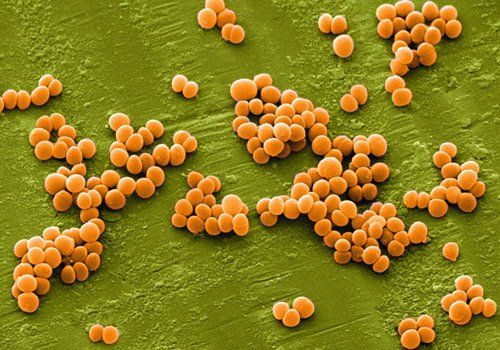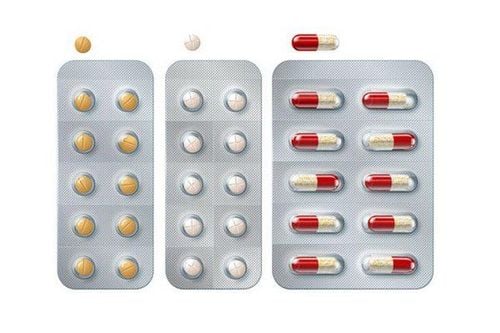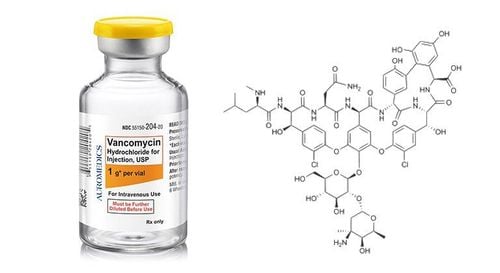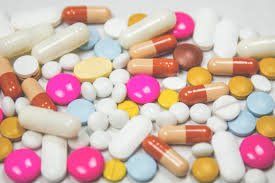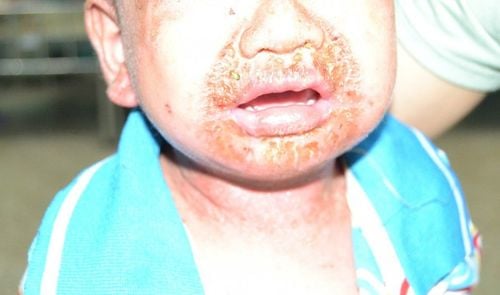This is an automatically translated article.
Amoxicillin is a Penicillin antibiotic that is effective against many different types of bacteria, especially when combined with a beta-lactamase inhibitor such as Sulbactam. So what is Sumakin and in what cases is it indicated?
1. What is Sumakin?
The main active ingredient of Sumakin is the antibiotic Amoxicillin, 500mg (as trihydrate salt) and 125mg Sulbactam (as sulbactam pivoxil).
In addition, the drug composition Sumakin also includes a number of excipients such as Crospovidone, white sugar, Lactose, Acesulfame Potassium, Colloidal silicon dioxide, tutti frutti flavor powder just enough in 1 pack.
2. Pharmacological characteristics of the drug Sumakin
Sumakin is a drug that kills some strains of bacteria that are sensitive to Amoxicillin antibiotics, and because it is combined with Sulbactam, it will help protect Amoxicillin from being destroyed by beta-lactamase enzymes.
Amoxicillin's bactericidal mechanism is to inhibit the biosynthesis of cell wall proteins, thereby killing bacteria. Amoxicillin is similar to other aminopenicillins in that it is active in vitro against most aerobic gram-positive and gram-negative cocci (except for some penicillinase-producing strains). In addition, the spectrum of action of Amoxicillin also includes a number of aerobic and anaerobic Gram-positive bacilli and some spirochetes. Sumakin is also active in vitro against several strains of Gram-negative aerobic and anaerobic bacilli and a number of other bacteria such as Mycoplasma, Rickettsia and fungi. Some strains of bacteria are still sensitive to Sumakin, including:
Gram-positive aerobic bacteria: Staphylococcus aureus (staphylococcus aureus), Staphylococcus epidermidis (skin staphylococcus), Streptococcus groups A, B, C and G (linked). cocci), Streptococcus pneumoniae (pneumococcal) Viridans Streptococci, some strains of Enterococci, Corynebacterium diphtheriae, Listeria monocytogenes; Gram-negative aerobic bacteria: Neisseria meningitidis (meningococcal) and Neisseria gonorrhoeae (non-penicillinase-producing gonococcus), Haemophilus influenzae, some strains of Haemophilus parainfluenzae, some strains of Enterobacteriaceae, Proteus mirabilis, Salmonella and Shigella, Helicobacter pylori, Bordetella pertussis, Actinobacillus, Pasteurella multocida, Gardnerella vaginalis, Moraxella catarrhalis; Anaerobic bacteria such as Actinomyces, Arachnia, Bifidobacterium, Clostridium tetani, Clostridium perfringens, Lactobacillus...; Spirochetes: Treponema pallidum, Borrelia burgdorferi the causative agent of Lyme disease. Several strains of bacteria are resistant to Sumakin, including Methicillin-resistant Staphylococcus aureus, Acinetobacter Alcaligenes, beta-lactamase-secreting Moraxella catarrhalis, Campylobacter, Citrobacter freundii, Klebsiella pneumoniae, Legionella, Morganella morganii, Proteus rettgeri, Proteus vulgaris , Providencia, Pseudomonas, Serratia...
Sulbactam ingredient in Sumakin is an irreversible competitive inhibitor of beta-lactamase enzyme. This combination in Sumakin has a synergistic effect that increases the effect and broadens the antibacterial spectrum of Amoxicillin with beta-lactamase-producing bacteria.
Pharmacokinetics of Sumakin:
Amoxicillin is absorbed orally approximately 80% and is not affected by food. Mean peak blood concentrations are achieved 1-2 hours after oral administration of Sumakin and mean half-life is approximately 1 hour, depending on the individual, in subjects with normal renal function; Amoxicillin is distributed into most body tissues and biological fluids, reaching therapeutic concentrations in bronchial secretions, nasal sinus and amniotic fluid, saliva, humors, cerebrospinal fluid, and aqueous humor. secreted in membranes and middle ear; Approximately 20% of the drug Sumakin is bound to plasma proteins; Sumakin is excreted mainly in urine (70-80%) and bile (5-10%). Notably, the antibiotic Amoxicillin crosses the placental barrier and can be excreted in breast milk
3. Uses of Sumakin
Sumakin is indicated for use in the treatment of bacterial infections as follows:
Ear, nose and throat infections and respiratory tract infections such as otitis media, sinusitis, tonsillitis, pharyngitis, laryngitis, bronchitis, pneumonia, bronchitis ...; Abdominal and gynecological infections; Urinary tract infections, especially in cases of recurrent or complicated cystitis; Skin and soft tissue infections, lymphatic vasculitis, cellulitis, open wound infection or tissue loss; Sumakin is also used to treat root and oral abscesses caused by Staphylococcus aureus.
4. Dosage of Sumakin
Usual dose of Sumakin recommended for adults and children over 12 years old: Sumakin 500/125: 1-2 packs/time, take 2-3 times/day.
Recommended dose of Sumakin for children under 12 years old: 75-100mg/kg body weight/day, divided into 2-3 oral doses.
Dosage of Sumakin for patients with renal failure should be adjusted according to the creatinine clearance, specifically as follows:
10 < ClCr < 30ml/min: 1 sachet of Sumakin 500/125 orally every 12 hours; ClCr < 10ml/min: 1 sachet of Sumakin 500/125 orally every 24 hours; Hemodialysis patients: 1 sachet of Sumakin 500/125 orally every 24 hours and an additional dose after the end of dialysis.
5. Contraindications of the drug Sumakin
Patients with a history of allergy to Amoxicillin, other Penicillins or Cephalosporins; People who are allergic to Sulbactam or any other ingredients in Sumakin ; Patients with a history of gastrointestinal disease, infection with mononucleosis, herpes virus infection, or being treated with Allopurinol; Patients who are pregnant or breastfeeding should also not take Sumakin .
6. Some notes when using Sumakin
Caution should be exercised when using Sumakin due to the risk of serious hypersensitivity reactions in people with a history of allergy to penicillin or other allergens. Therefore, before initiating treatment with Sumakin, it is necessary to carefully investigate the patient's history of allergy to penicillins, cephalosporins and other allergens.
Patients being treated with Sumakin are at risk of superinfection with fungi or other bacteria (mainly Pseudomonas or Candida). If superinfection occurs, Sumakin should be discontinued and appropriate treatment instituted.
During treatment with Sumakin, an increase in liver enzymes, mainly glutamic-oxalacetic transaminase, may occur. Therefore, it is necessary to periodically check liver function and kidney function if Sumakin is used for a long time.
Use caution when taking Sumakin to elderly patients, children, drivers or operating machinery.
7. Undesirable effects of the drug Sumakin
Common side effects of Sumakin include nausea, vomiting, diarrhea, dyspepsia and epigastric pain...
Rarely, patients experience the following side effects:
Reactions allergic manifestations of urticaria, quincke edema, maculopapular, dyspnoea and, rarely, anaphylaxis...; Interstitial nephritis ; Hematological reactions such as anemia, disorders of platelets, white blood cells; Liver dysfunction; Candida infections of the mouth or other sites due to an imbalance of bacteria; Stevens-Johnson syndrome, erythema multiforme and toxic epidermal necrolysis; There are some cases of taking Sumakin with pseudomembranous enteritis. Patients should inform the doctor about the unwanted effects encountered during the use of Sumakin.
8. Sumakin Drug Interactions
Sumakin used concurrently with Allopurinol may increase the risk of allergic skin reactions. Chloramphenicol, Macrolide, Sulfonamide and Tetracycline derivatives can interfere with the bactericidal effect of penicillin antibiotics such as Sumakin.
Amoxicillin in Sumakin may interfere with the results of a complete blood protein test or cause a false-positive reaction in the urine glucose test by color reaction.
Above is important information about Sumakin, if you have any more questions, you can contact the doctor to discuss specifically.
Please dial HOTLINE for more information or register for an appointment HERE. Download MyVinmec app to make appointments faster and to manage your bookings easily.




